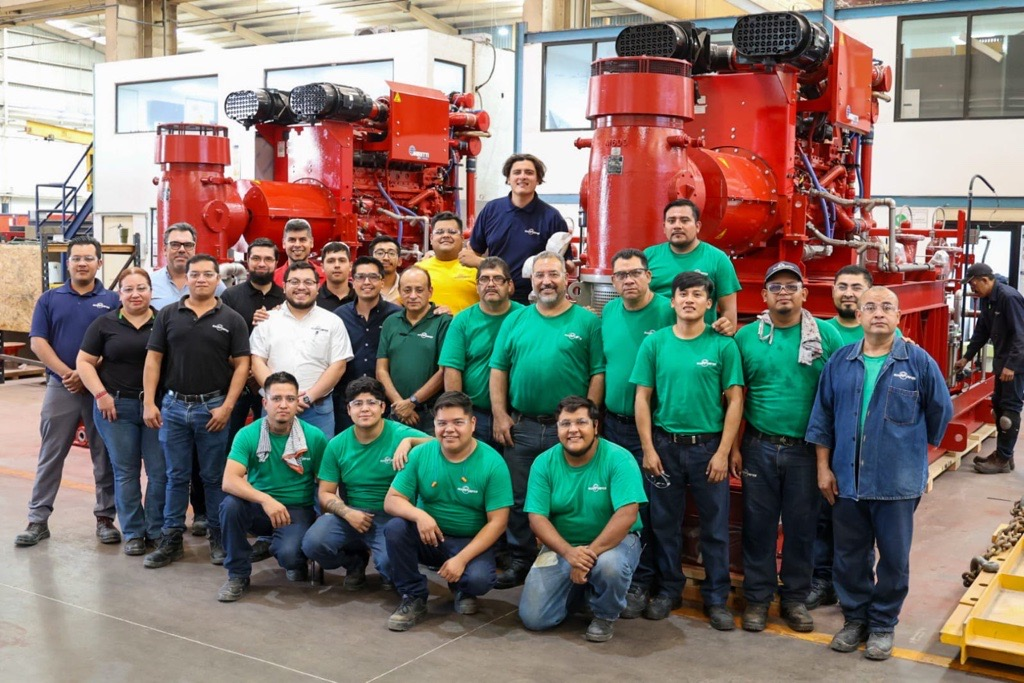Ruhrpumpen's Fire Campus: August 2025
Regular testing and preventive maintenance of fire pumps are essential to ensure safety in chemical facilities. NFPA 20, in conjunction with NFPA 25, requires that pumps be started and run at full speed at defined intervals to verify they are always ready for service. Weekly or monthly nonflow testing detects early signs of malfunction and confirms that pumps can respond effectively in an emergency, preventing small issues from escalating into serious hazards.
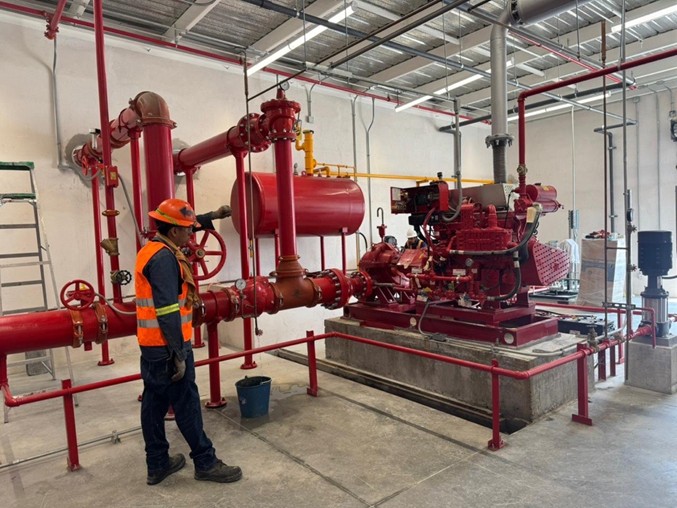
Routine inspections also help identify subtle performance degradations, such as a drop in net pump pressure, which may result from worn components, suction obstructions, or clogged impellers. Diesel engine–driven pumps require additional preventive measures, including checking engine temperature, oil, fuel, and cooling systems, ensuring that the pump can operate under maximum load conditions. Flowmeter tests and accurate monitoring of suction and discharge gauges further support reliable operation.
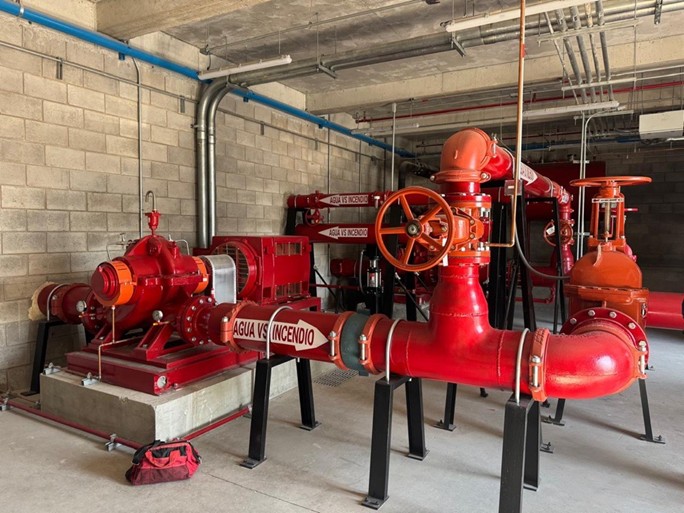
For chemical facilities, where stored substances can be highly flammable or reactive, these scheduled inspections and tests are the first line of defense. Maintaining detailed records of pump performance, maintenance actions, and operational parameters allows facility managers to act before failures occur.
Don’t wait for emergency, proactive testing and maintenance save lives, protect property, and ensure uninterrupted fire protection.
FireWatch: World Updates, August 2025
On June 30, 2025, a catastrophic explosion struck the Sigachi Industries plant in Pashamylaram, Sangareddy district, Telangana, at around 9 a.m. IST. The blast originated in the spray dryer unit, causing the surrounding four-story building to collapse while over 140 people were inside. Initial reports cited 36 deaths and 33 injuries, and by mid-July, the confirmed figures rose to 46 fatalities, 33 injured, and 8 missing. The intensity of the fire and the structural collapse resulted in many bodies being severely burned, necessitating DNA testing for identification.
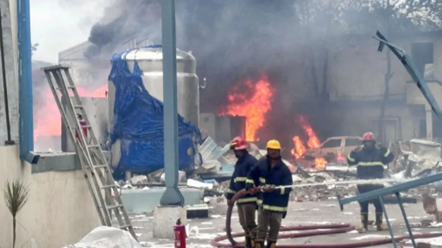
Sigachi Industries, a major global producer of microcrystalline cellulose (MCC)—used in pharmaceuticals, food, cosmetics, and specialty chemicals—saw roughly a quarter of its annual MCC production impacted by the disaster. In the quarter ending June 2025 (Q1 FY26), the company swung from a ₹13 crore profit to a ₹101 crore loss, despite revenue increasing 34% to ₹128 crore. To mitigate the impact, production from Pashamylaram was rerouted to its Gujarat facilities in Dahej and Jhagadia, while the Telangana plant was ordered to remain shut for 90 days.
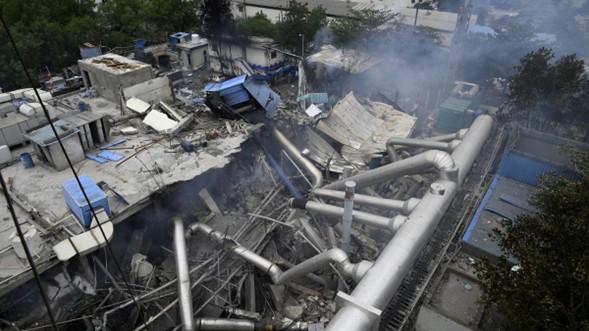
At Ruhrpumpen, this tragedy reinforces that reliable fire protection is far more than a compliance obligation. Robust fire pump systems, UL-listed and FM-approved equipment, and proactive maintenance are critical safeguards that protect lives, secure assets, and ensure uninterrupted business operations. Incidents like the Sigachi Industries explosion highlight why customers rely on Ruhrpumpen for engineered fire solutions that meet the highest global standards—solutions designed to keep facilities fully prepared, resilient, and ready to respond effectively in any emergency.
Ruhrpumpen's Spotlight: August 2025
At Ruhrpumpen, we take pride in safeguarding critical energy infrastructure around the world. One of our latest milestones is supporting the fire protection system of one of the most important LNG export terminals in the United States.
Strategically located in southeast Texas with direct access to the Gulf of Mexico, this facility will export approximately 13.5 million metric tons of LNG annually—a capacity that helps fuel global energy needs while supplying enough energy to power more than 27,000 homes each year.
A Complete Fire Protection Solution
To ensure the highest level of safety, Ruhrpumpen is delivering a fully preassembled, ETL-certified pump house. At the heart of this system are two UL/FM-certified horizontal split case fire pumps (HSC 8x14x21E), each rated at 3,000 GPM. One unit is driven by an electric motor, while the other is powered by a high-performance diesel engine, guaranteeing redundancy and reliability. Supporting them is a CPP21 jockey pump rated at 60 GPM, designed to maintain system pressure and readiness at all times.
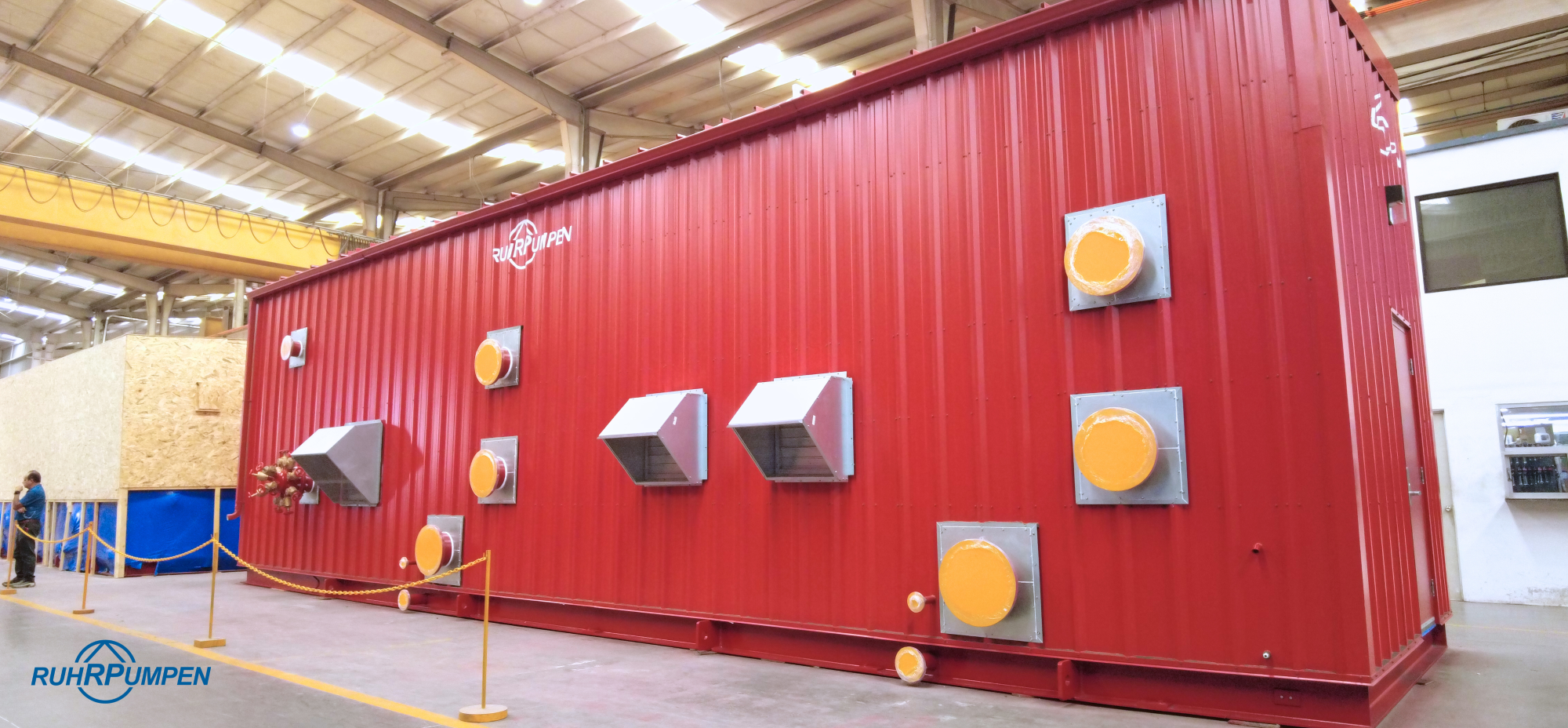
Meeting Unique Project Challenges
Every project comes with its own demands, and for this LNG terminal, the biggest challenge was meeting the customer’s requirement of 190 MPH wind load, Exposure Category C. Achieving this specification required close collaboration not only within Ruhrpumpen’s engineering team but also with our subvendor of panels, who modified the pump house panel structures to withstand such extreme conditions. This partnership ensured compliance without compromising quality, safety, or delivery timelines.
Built for Demanding Environments
This pump house goes far beyond standard configurations, integrating features that ensure operational continuity under extreme conditions, including:
- A double-walled diesel tank with flame arresters, overfill protection, and integrated alarms
- A roof hatch for safe and efficient pump and engine removal
- Full-length ice rakes for cold-weather readiness
- Seismic resistance and design for 190 MPH wind loads
- Integrated 5 kW unit heaters with thermostats for controlled internal climate
- An NFPA-13 compliant sprinkler system tailored for Extra Hazard Group 2 occupancy
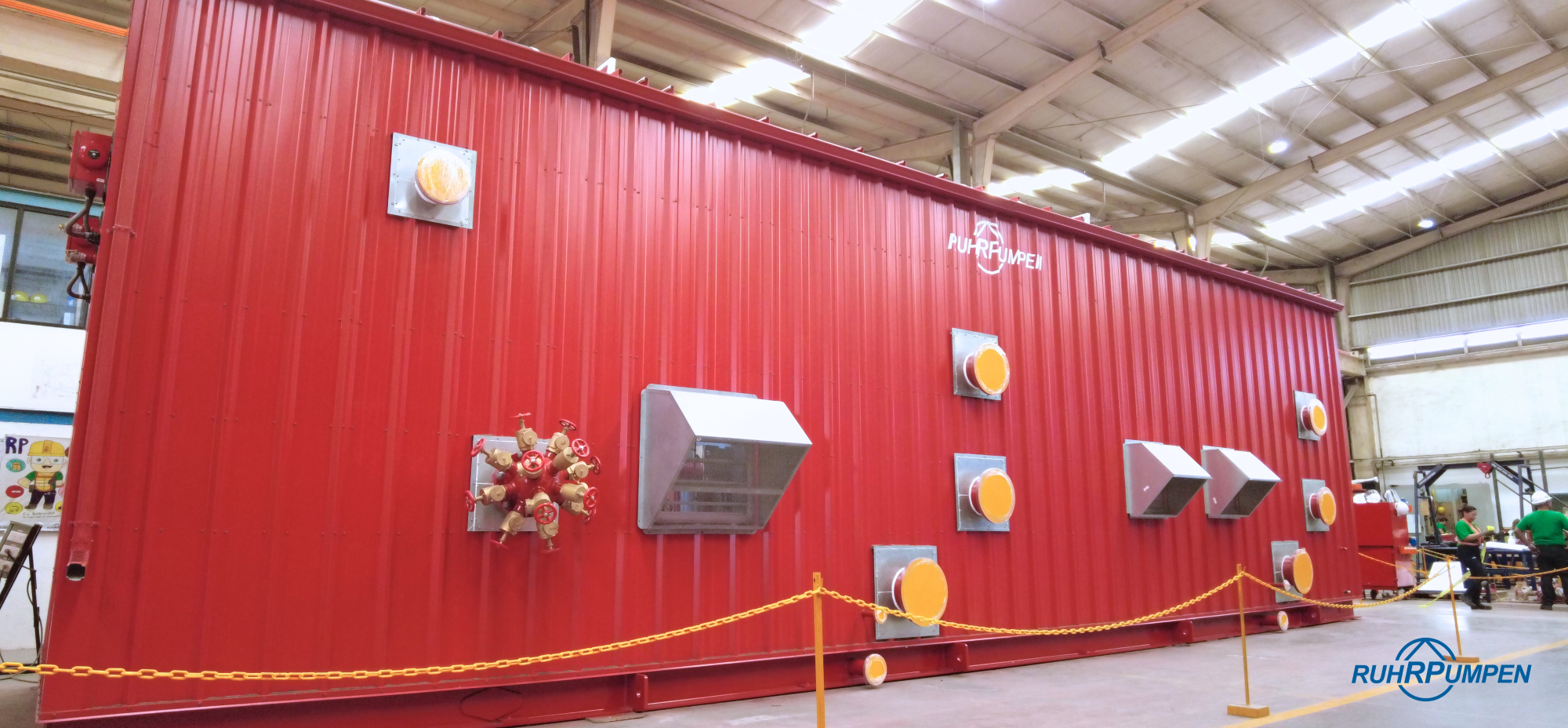
Reliability You Can Trust
Engineered and manufactured to the strictest UL, FM, and ETL standards, this fire protection solution delivers more than equipment—it delivers peace of mind. With a system designed to perform in the harshest environments, Ruhrpumpen ensures that critical LNG operations remain protected, reliable, and resilient.
At Ruhrpumpen, powering safety is not just our mission—it’s our commitment to every customer, every project, and every community we serve.
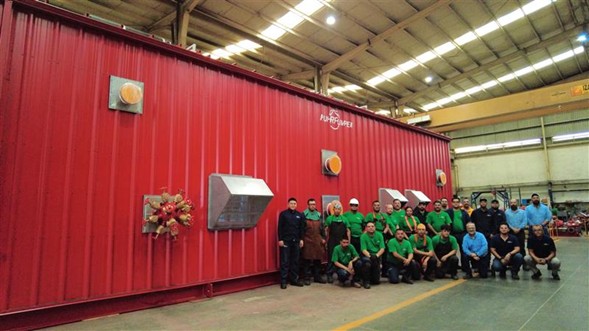
At Ruhrpumpen, we believe that aligning technical capabilities with commercial strategy is key to delivering world-class pumping solutions. Recently, our North America Sales Team visited the Ruhrpumpen Systems factory as part of an initiative to strengthen collaboration between our commercial and engineering divisions.
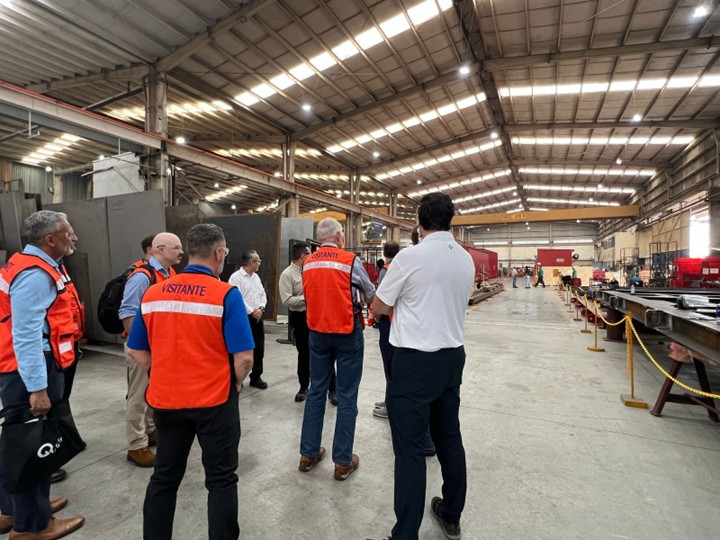
During the visit, the team had the opportunity to tour the Systems production facility, gaining valuable insight into the design, integration, and assembly of our fire pre-packaged pumping systems. This hands-on experience helps our sales professionals better understand the technical differentiators that set Ruhrpumpen apart in the global market.
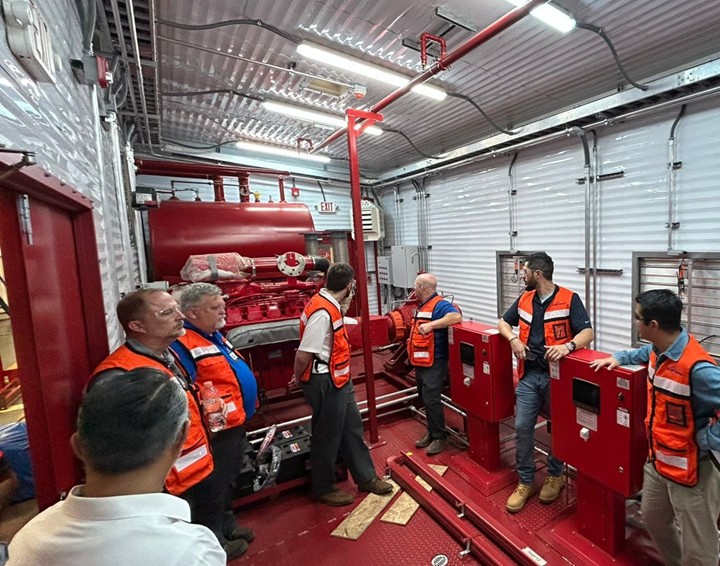
The visit served as a platform for exchanging ideas, enhancing product knowledge, and discussing how to better address the complex needs of our customers through tailored solutions. By reinforcing the connection between field sales and system engineering, we aim to elevate our value proposition and ensure our teams are aligned from initial proposal to final delivery.
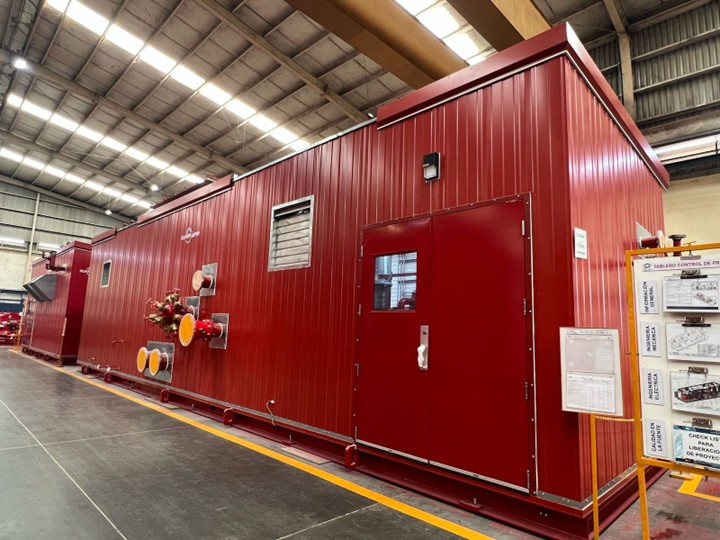
We thank our Sales Team for their continued commitment and enthusiasm. Their close engagement with our manufacturing capabilities is a critical part of our strategy to drive innovation, customer satisfaction, and sustainable growth.
Ruhrpumpen's Fire Campus: Summer 2025
NFPA 20, Standard for the Installation of Stationary Pumps for Fire Protection, offers the latest provisions to help ensure fire pump readiness and reliability. This standard offers the requirements for the installation of stationary fire pumps used to provide water supply for fire protection.
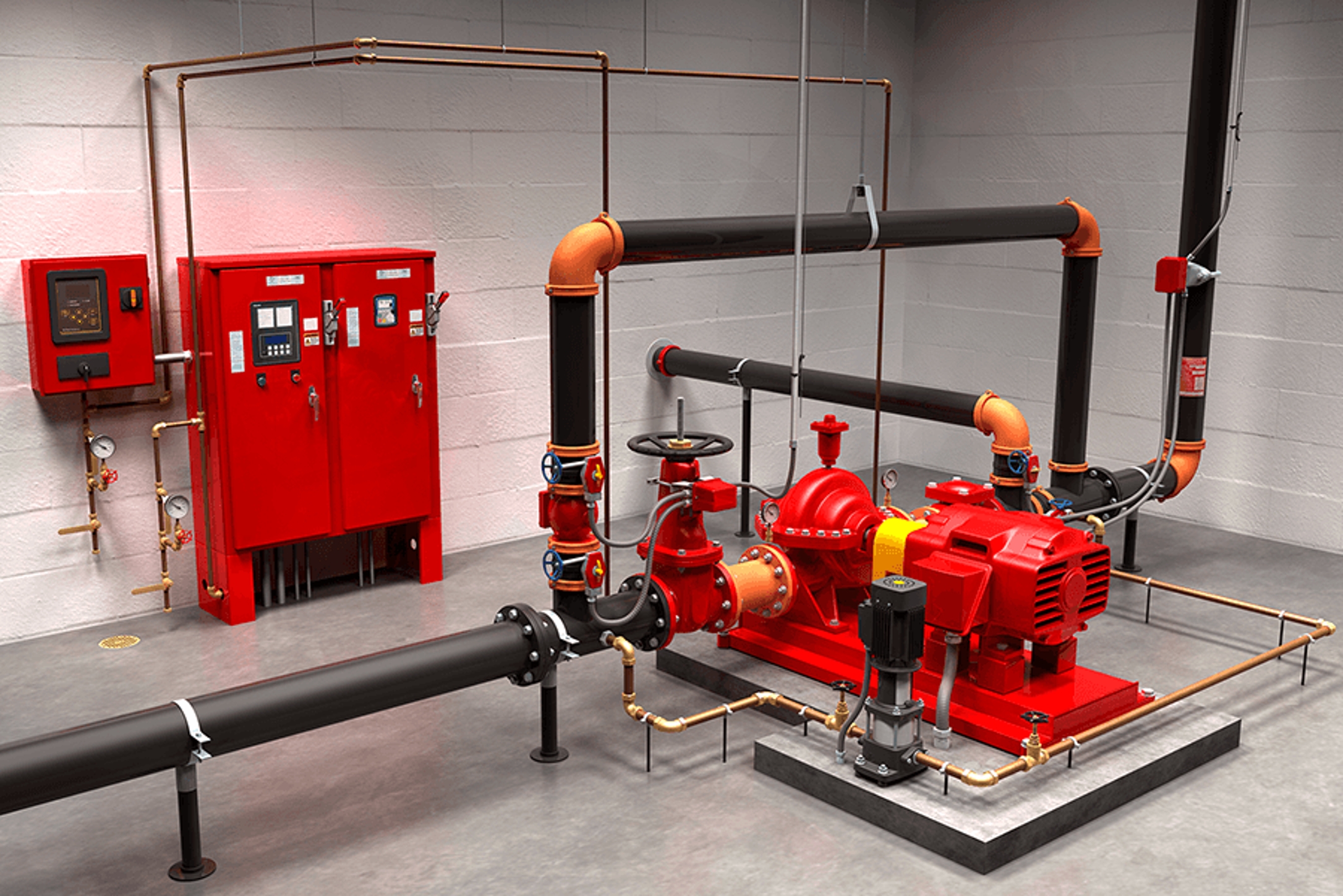
Designers, engineers, contractors, and installers can look to this standard for the latest up-to-date requirements for fire pump design, electrical and mechanical construction, acceptance testing, operation, and more.
Expert Instruction in Fire Protection Systems for Your Team.
When your team is responsible for the installation, testing, and maintenance (ITM) of stationary fire pumps, it’s important that they’re up to date with the latest standards. And when you invest in team training, you can improve business performance, increase profits, and retain your most talented employees. This training on NFPA 20, Standard for the Installation of Stationary Pumps for Fire Protection, takes your team through the experience of designing, installing, and testing a fire pump.
Key topics:
- Differentiating between fire pump types, applications, and characteristics
- Requirements for fire pump performance based on unit sizing, water supply, power supply, and additional factors
- Identifying and applying the requirements for the installation of fire pumps and peripheral equipment and construction and protection of fire pump enclosures
- The criteria for determining the appropriate components and system layout for a fire pump assembly
- Defining important terms and design considerations and referencing considerations for special project situations, such as high-rise buildings
- Locating and applying requirements for finalizing a fire pump installation, including acceptability testing, inspections, and documentation
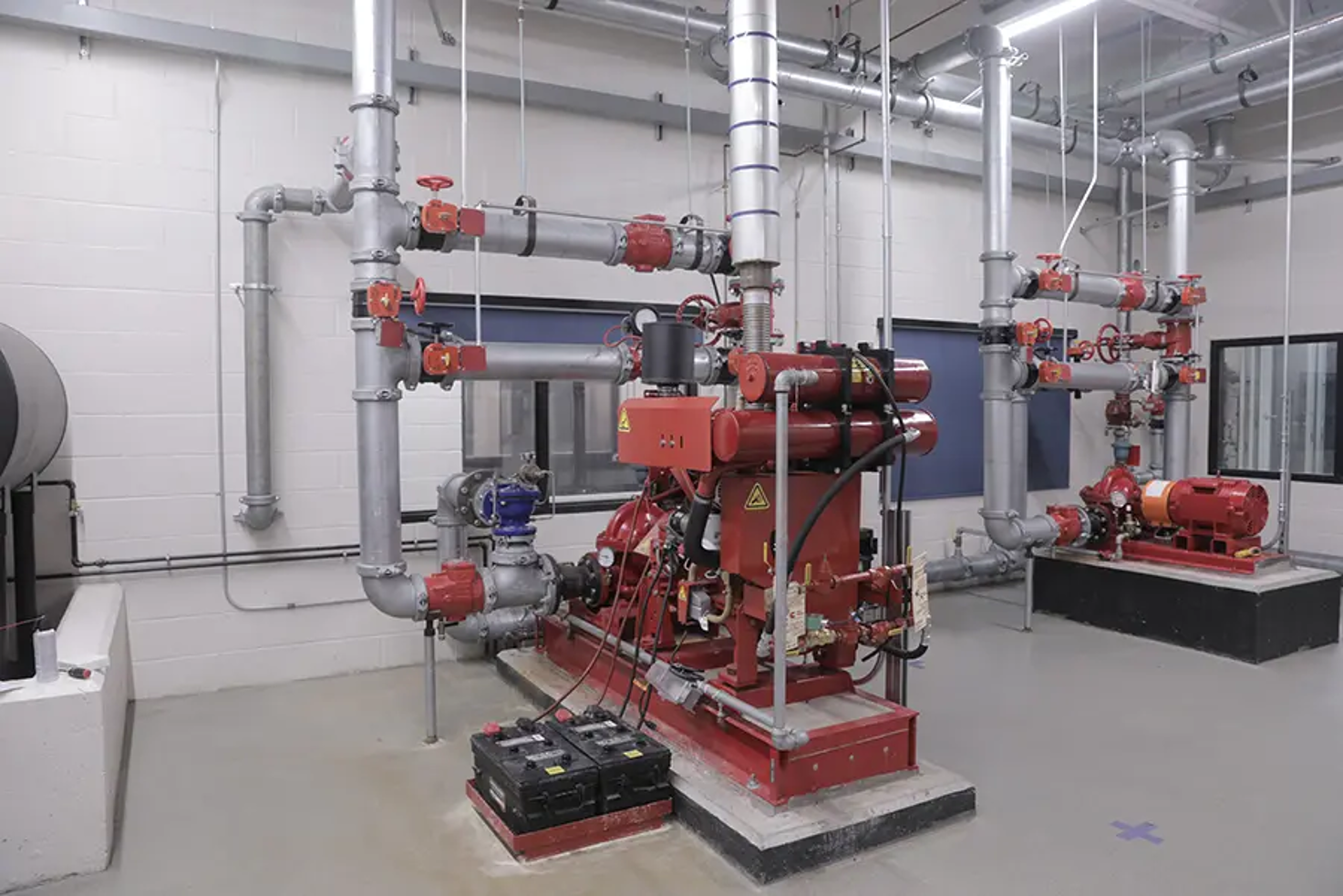
NFPA 20 training can benefit anyone who makes decisions about stationary fire pumps and needs to be informed of the latest information for their work, including:
- Engineers, Designers, and Architects: To identify the appropriate fire pump to adequately supply water to a building’s sprinkler systems and the requirements for protecting it.
- Fire Marshals and Insurers: To increase knowledge of requirements and code compliance relating to fire, including plans review, acceptance testing and inspections, and ongoing ITM.
- Installers, Fire Protection Contractors, Sprinkler System Fitters, Sprinkler Technicians, and Project Managers: To learn requirements for installing fire pumps.
Find more information about our fire systems clicking here.
FireWatch: World Updates
June 25, 2025 - The cargo ship Morning Midas, which had been transporting approximately 3,000 new vehicles to Mexico, sank in the North Pacific Ocean on Monday. This incident occurred after the crew abandoned the ship due to an uncontrollable onboard fire that left the vessel incapacitated.
The ship sank in international waters off Alaska's Aleutian Islands chain, as confirmed by Zodiac Maritime, the London-based management company overseeing the vessel.
The Morning Midas was carrying 350 metric tons of marine gas oil and 1,530 metric tons of very low sulfur fuel oil. The fire damage, compounded by adverse weather conditions and water seepage, led to the ship sinking in waters approximately 16,400 feet deep and about 415 miles from land.
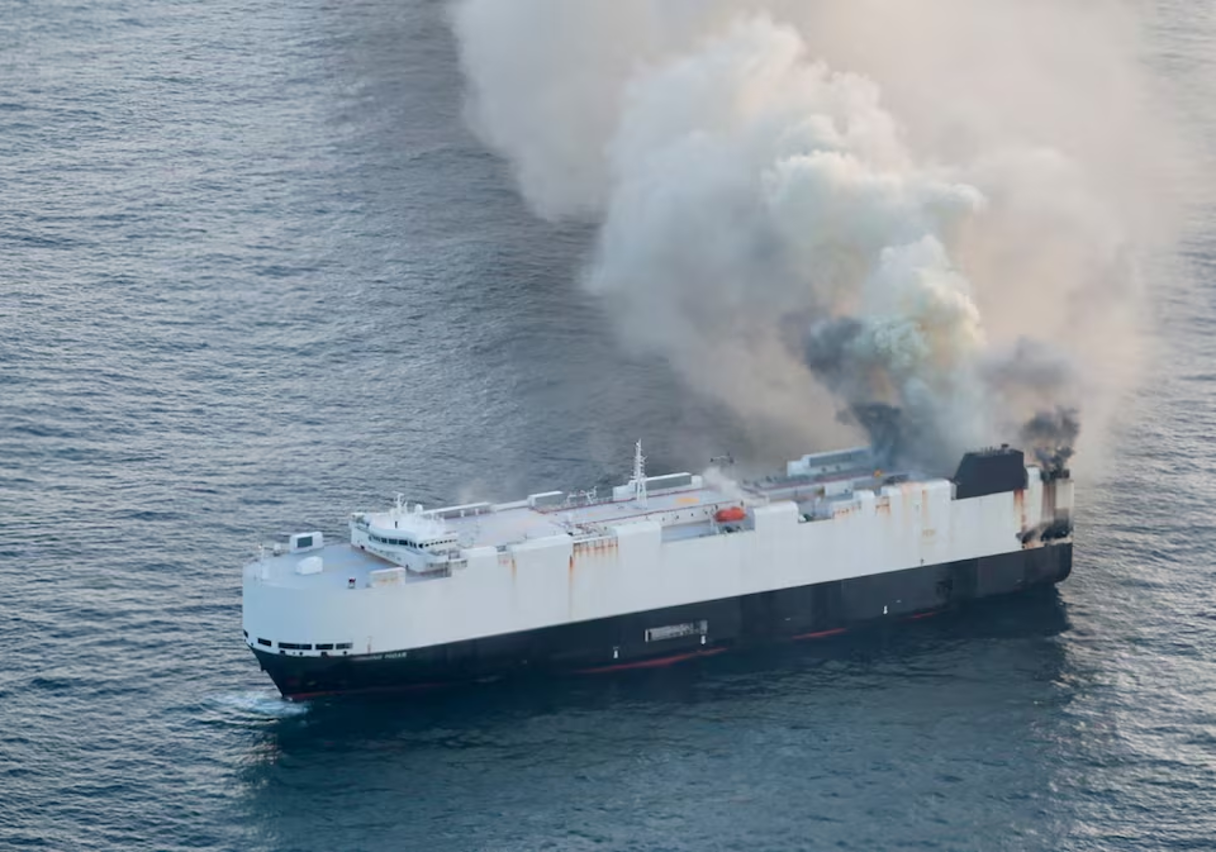
The ship's cargo included around 3,000 new electric vehicles destined for a major Pacific port in Mexico. It remains unclear if any of the vehicles were salvaged before the ship sank, and Zodiac Maritime has not yet responded to inquiries.
Following the fire, a salvage crew arrived to assess the situation. Two salvage tugs equipped with pollution control gear will stay on site to monitor for any signs of pollution or debris. Fortunately, the crew members of these tugs were unharmed when the Morning Midas sank.
Captain Christopher Culpepper, commander of Coast Guard Sector Western Alaska and U.S. Arctic, emphasized the priority of responder safety, stating, "We're working closely with Zodiac Maritime in an advisory capacity to ensure a swift and effective response to any potential signs of pollution." Zodiac Maritime is also dispatching another specialized pollution response vessel to the location as a precaution.
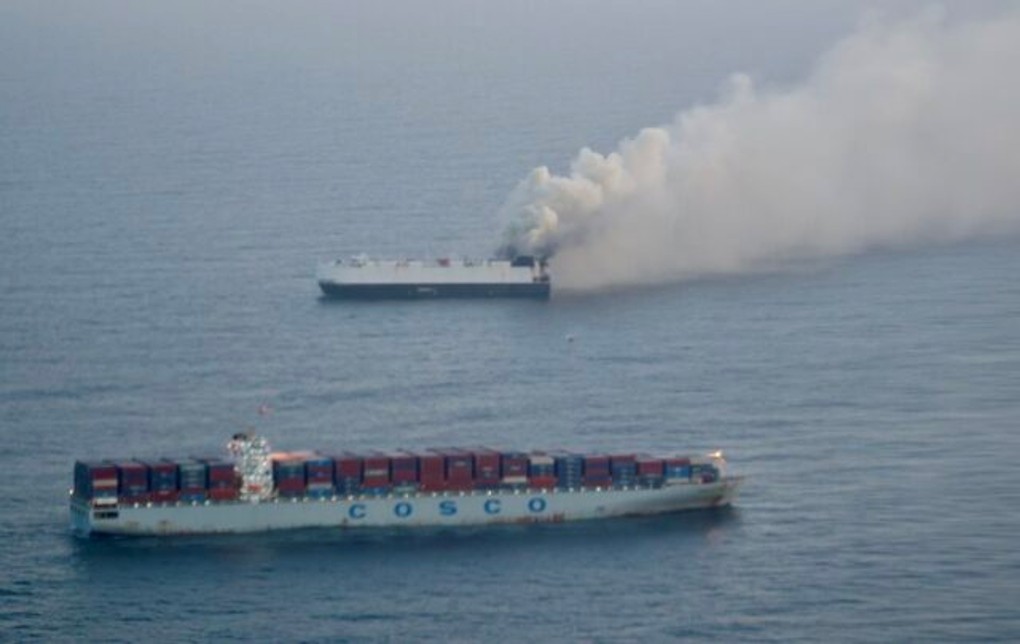
The Coast Guard received a distress alert on June 3 regarding the fire aboard the Morning Midas, which was then about 300 miles southwest of Adak Island. All 22 crew members evacuated to a lifeboat and were rescued by a nearby merchant marine vessel, with no reported injuries.
Among the cargo were approximately 70 fully electric and 680 hybrid vehicles. Initially, a large plume of smoke was observed at the ship's stern, emanating from the deck loaded with electric vehicles.
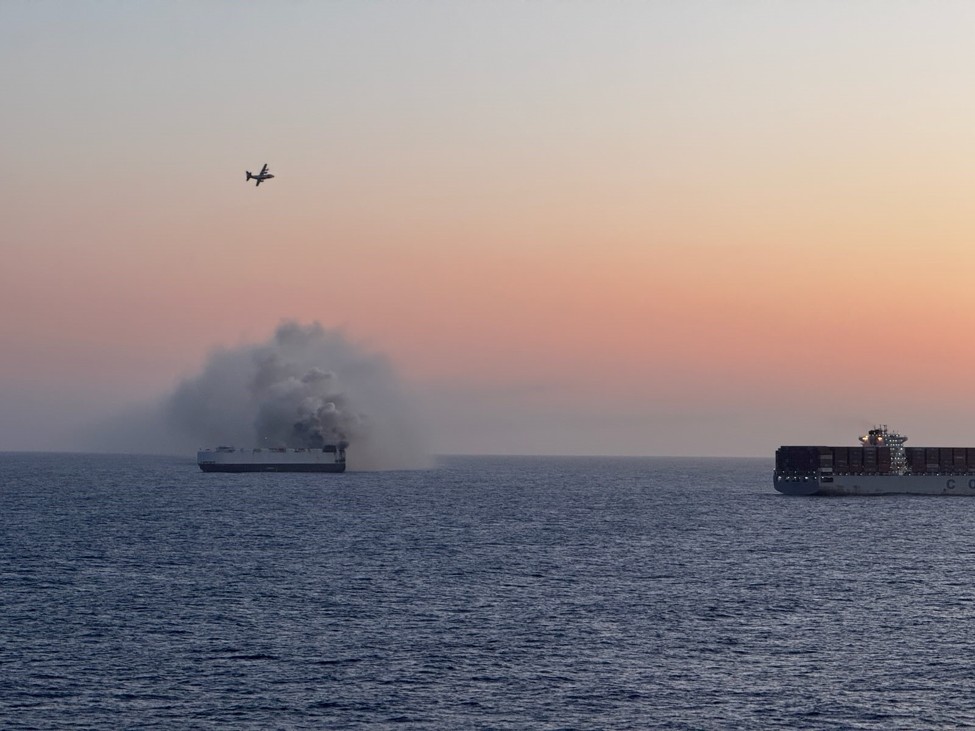
This incident echoes a recent report by a Dutch safety board, which called for improved emergency response on North Sea shipping routes following a deadly 2023 fire aboard a freighter carrying 3,000 automobiles, including nearly 500 electric vehicles, from Germany to Singapore. That fire resulted in one fatality and several injuries, with the ship eventually being towed to a Netherlands port for salvage.

